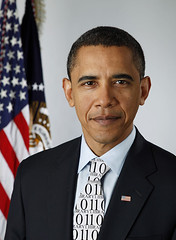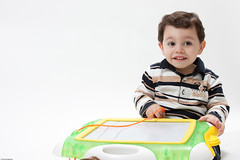 Several media outlets have been buzzing about a recent sociological study that has been used to explain the proliferation and perseverance of a number of myths related to current debates about U.S. healthcare reform.
Several media outlets have been buzzing about a recent sociological study that has been used to explain the proliferation and perseverance of a number of myths related to current debates about U.S. healthcare reform.
Bernie Mooney of Examiner.com writes:
Whether you support healthcare reform or not, one thing should be a given, that whatever decision you reach should be based on the facts. Despite efforts to inform people of what the bill is and what it isn’t, many still believe the myths about the not-yet finalized bill.
You would think that with easy access to the overwhelming amount of information available on the internet and elsewhere, people would be more informed. Maybe that’s the problem. With access to massive amounts of information, people can cherry pick the information that most validates and supports their original view. People want to be right, so they seek out information that supports their worldview rather then information that challenges it. Is this stupidity or is there a more deep-rooted psychological reason for this?
There just might be something at play here beyond simple stupidity. A study done by researchers from four major research institutions* may explain it. The study, There Must Be a Reason: Osama, Saddam and Inferred Justification, was published in the journal Sociological Inquiry. They focused on the belief, held by many Americans, that Saddam Hussein was linked to the terrorist attacks of 9/11 despite all evidence to the contrary.
About the study:
Dr. Steven Hoffman, co-author of the study, said of the findings, “Our data shows substantial support for a cognitive theory known as ‘motivated reasoning,’ which suggests that rather than search rationally for information that either confirms or disconfirms a particular belief, people actually seek out information that confirms what they already believe.”
“We form emotional attachments that get wrapped up in our personal identity and sense of morality, irrespective of the facts of the matter. The problem is that this notion of ‘motivated reasoning’ has only been supported with experimental results in artificial settings. We decided it was time to see if it held up when you talk to actual voters in their homes, workplaces, restaurants, offices and other deliberative settings.”
Hoffman says, “For the most part people completely ignore contrary information. We did not find that people were being duped by a campaign of innuendo so much as they were actively constructing links and justifications that did not exist.”
“They wanted to believe in the link,” he says, “because it helped them make sense of a current reality. So voters’ ability to develop elaborate rationalizations based on faulty information, whether we think that is good or bad for democratic practice, does at least demonstrate an impressive form of creativity.”
Newsweek also picked up on the story. Health columnist Sharon Begley writes:
Some people form and cling to false beliefs about health-care reform (or Obama’s citizenship) despite overwhelming evidence thanks to a mental phenomenon called motivated reasoning, says sociologist Steven Hoffman, visiting assistant professor at the University at Buffalo. “Rather than search rationally for information that either confirms or disconfirms a particular belief,” he says, “people actually seek out information that confirms what they already believe.” And God knows, in the Internet age there is no dearth of sources to confirm even the most ludicrous claims (my favorite being that the moon landings were faked). “For the most part,” says Hoffman, “people completely ignore contrary information” and are able to “develop elaborate rationalizations based on faulty information.”
His conclusions arise from a study he and six colleagues conducted. They were looking at the well-known phenomenon of Americans believing that Saddam Hussein was involved in the 9/11 attacks. Some people, mostly liberals, have blamed that on false information and innuendo spread by the Bush administration and its GOP allies (by former members of the Bush White House, too, as recently as this past March). (As Dick Cheney said in June, suspicion of a link “turned out not to be true.”) But the researchers think another force is at work. In a paper to be published in the September issue of the journalSociological Inquiry(you have to subscribe to the journal to read the full paper, but the authors kindly posted it on their Web site here), they argue that some Americans believe the Saddam-9/11 link because it “made sense of the administration’s decision to go to war against Iraq . . . [T]he fact of the war led to a search for a justification for it, which led them to infer the existence of ties between Iraq and 9/11,” they write.
Read more from Examiner.com
Read more from Newsweek.
UPI.com also picked up the story…
The New York Times also picked up the findings…







